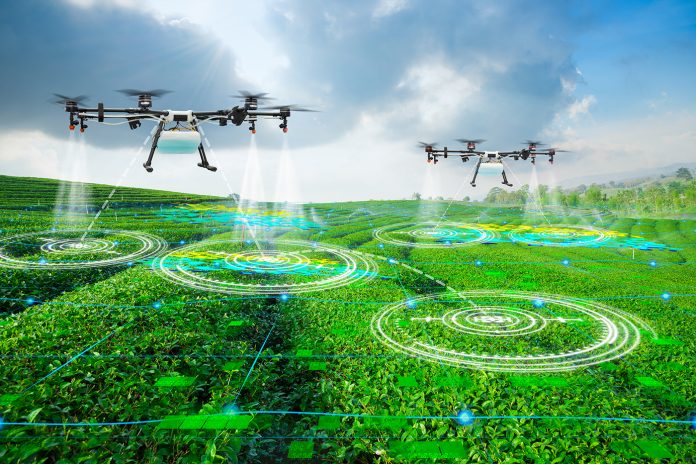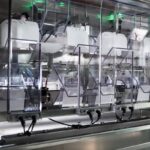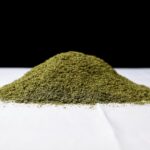Cannabis production soon will be as sophisticated in its automation as any other large-scale consumer packaged goods industry, utilizing systems able to power rapidly expanding global marketplaces. These systems will employ all the bells and whistles modern technology has to offer, including game-changers like artificial intelligence (AI) and complex end-to-end systems that can process plant material from harvest to packaging with minimal human interaction. In fact, automated solutions are evolving as we speak, driven not by choice but by sheer necessity as the hemp and cannabis industries position themselves for historic growth on a global scale.
The numbers explain why automation is becoming imperative. We are accustomed to touting them, and the media equally accustomed to repeating them, for good reason: They anticipate explosive demand. In the United States alone, legal medical and adult-use sales today range between $13 billion and $15 billion and are estimated to balloon to around $24 billion by 2025. Internationally, with regions like South America, Africa, Europe, and Canada leading the way, global expansion is an ongoing phenomenon.
The global hemp market probably will exceed the size of the global cannabis market and be equally disruptive. Without exaggeration, hemp has the potential to revolutionize economies, create new markets and alliances, and make an array of new products widely available to consumers on a scale we have not seen before. It’s already happening, in fact: Smokable hemp is big in Europe, Guatemala is pushing for large-scale hemp/CBD production, and potential CBD production in Asia is attracting a lot of attention. Thailand is enthusiastic about getting into the game, and South Africa is developing a market. It will be interesting to watch where some of these countries go in the 2020 season. In their rush to embrace the “new normal,” many already are considering converting large tracts of traditional agricultural lands to hemp production.
Unfortunately, while the amount of hemp being grown globally is mind-blowing, the available technology is not capable of handling the current cultivation volume. As a result, automation is following the same path as most other agricultural industries. As larger and larger grows require ever-more-sophisticated automated systems, the global market soon will require industrial-grade harvesting machines like the harvesters and combines used in traditional agriculture. Ultimately, complete, customizable, end-to-end automation is the future for the giants of the industry.
Automation at every level
Automation is crucial for industrial-scale cannabis and hemp operations producing 1,000 kilos or more per day. In such an environment, end-to-end customized automated systems that, at a minimum, sort, trim, sift, and package are an absolute necessity. Ideally, the machines will learn continuously, improving as they run 24/7 and handle thousands of pounds of product per day while providing data collection and management around the clock in real time.
As the industry develops, small and medium cultivators also will need to embrace automation. For example, small farmers (1,000 to 5,000 kilos cultivated per year) in Northern California may find salvation in systems that enable aggregating services they will need to stay viable. These include communal, central locations with processing equipment to which farmers transport their raw material for processing. Automated equipment will help such co-ops compete with larger operations.
Medium-sized operations—those producing from 500 to 1,000 kilos per month—also have specific needs that may be addressed by appropriate automation. Intelligent tools can help maintain high quality by providing producers with multi-function capabilities and precise measurements in terms of weights and packaging. Mid-size growers also need continuous processing capability and data monitoring in order to move a large amount of product through their systems while reducing the number of employees needed to operate the machinery. Recent automation innovation has focused on reducing to a minimum the number of people required to operate equipment, resulting in greater efficiency and a reduction in cases of contamination and human error.
Working together to automate a better future
Because no single machine can meet all needs, producers inevitably will work with automated systems that range from single machines capable of one function to machines with multiple capabilities such as data collection, data management, programming, and packaging. In order to reach that point, collaboration will be key, especially when one considers the work necessary to establish processing from visual inspection systems, remediation, processing, trimming, sorting, solventless extraction systems, packaging and batching, and labeling—all while maximizing efficiency and minimizing waste.
Equipment-based communication also will be essential as different kinds of raw material are allocated to different value streams. Data-driven decision-making will be key to maximizing profitability, helping producers obtain maximum value from their raw material in order to remain competitive. Partnerships between equipment manufacturers and producers to create equipment that really works will be key. Market forces may drive technology, but technology works best when born within the industry it is designed to serve.
The emerging global cannabis and hemp industries will revolutionize economies, create new markets, and make widely available to consumers a new array of products on a large scale, but the magic carpet that will deliver this version of the future will take the shape of automated systems manufactured in partnership with the innumerable small, medium, and large producers and manufacturers in this brave new world.

Cullen Raichart, founder and chief executive officer at GreenBroz Inc., is a mechanical engineer, inventor, and veteran of the United States Armed Forces. A pioneer in the field of automation, he designs and manufactures GreenBroz machines in the U.S., providing cutting-edge solutions to the growing cannabis and hemp industries worldwide.












